Medical-Astrological Convolute
Off limits to women and girls?
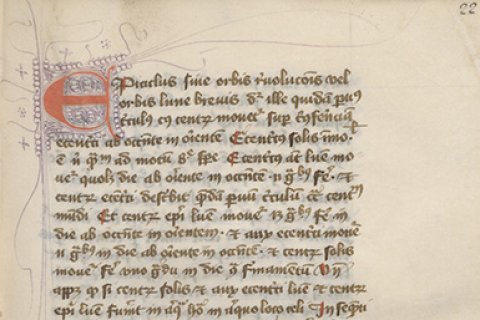
Ms. 723 in the Utrecht University Library is a remarkable case. To us, citizens of the twenty-first century, it appears to be a loose gathering of unrelated material. Yet to those who delve deeper into the manuscript, a certain internal cohesion can be detected. The attentive medieval reader of this manuscript had the opportunity to investigate a broad reflection of the scientific knowledge of his time. Provided he didn’t belong to the wrong sex, that is; some parts were rather explicitly not meant for women…
Convolute
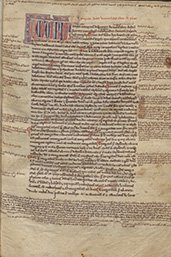
Leafing through the manuscript, the attention is called straight away to the fact that it appears to fall apart into three separate sections. This is hardly unusually for a medieval artes manuscript, for we are dealing with a convolute, meaning that various independent ‘books’ have been bound together into one codex. In this case the texts have even been copied down in different centuries. The intention of the bookbinder (or their client) is not immediately clear. Why exactly did these texts end up together?
Overview of the manuscript
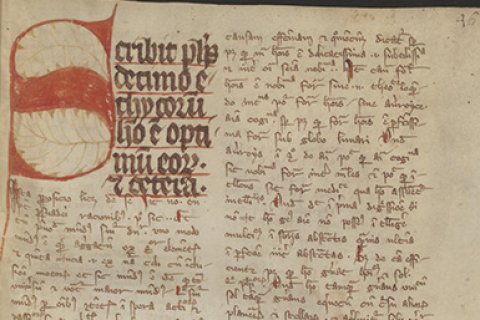
The first 43 folia contain a fifteenth-century collection of scientific texts on the physical arrangement of the cosmos. Next are 34 leaves with a medical-astrological treatise, which according to itself was written in 1353. Then follows a short extract (six leaves) from a zoological work by Aristotle, De historia animalium, and finally seventy folia bearing a heavily annotated text on beneficial diets, likely from the early fourteenth century. A handful of pages in the back shows notes in several different hands, in large part presumably from a later date.
1-19 Johannes de Sacrobosco, De Sphaera
21-33v Theorica planetarum
33v-34r Gerardus Cremonensis, Theorica
34r-38r Tractatus de sphaeris coelestibus et intelligentiis
38v-39r Isidorus, Lib. II Ethimologiarum (extracta)
39r-42r Johannes Buridanus, extract
46r-77r Tractatus astrologicus de generatione
77v-78r addendum to the previous text
78v note
79r-83av Aristoteles, De historia animalium (excerpta)
85r-121r Isaac Israeli ben Solomon, De diaetis universalis
121r-154r Idem, De diaetis particularibus
134r-154r Idem, Tercius liber dietarum
154r-156v medical notes
The cosmos
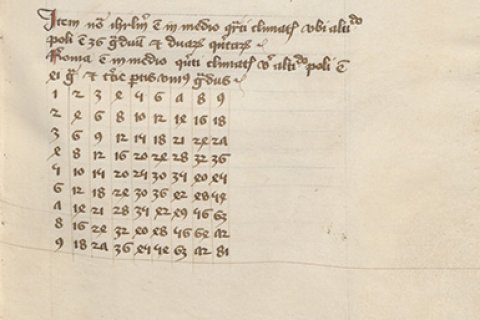
The main part of the physics section is formed by the two preeminent Latin astronomical texts in this field: De Sphaera Mundi by Johannes de Sacrobosco and the anonymous Theorica planetarum. These are supplemented by extracts of several other authorities, among them Isidore of Seville and Jean Buridan. These texts have all been written by the same hand, and together they appear to deliver a fairly complete picture of contemporary ‘common knowledge’ about the universe. Although the first few texts mostly end with an explicit (“here ends x”), followed by an incipit for the new text (“here starts y”), the final two begin and end unannounced. Moreover, at the end of this section’s last quire we find three vacant folia, neatly lined just as the previous leaves but otherwise left blank. This raises the possibility that perhaps more scientific texts were intended here, which for reasons unknown never materialized.
Planetary Doctrine
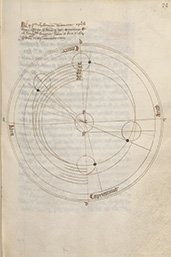
A note on the Theorica planetarum in this manuscript: several catalogs ascribe this text to the Austrian astronomer Georg von Peuerbach. However, it seems doubtful that his innovative planetary doctrine, which was only completed by a student of Peuerbach’s after his death in 1461, should have ended up in this codex. Based on the content and dating of this text, we are more than likely dealing with an older, anonymous, and in the Middle Ages widespread text of the same title (Grant 1974, 451). Some proper textual analysis ought to be able to settle this question. Also noteworthy is the fact that of the original five schematics of the planetary spheres, this copy incorporates only four – including one in the wrong place. Curious, since otherwise the enterprise seems to have been undertaken with the greatest care.
The secrets of women
Let’s take a look at the so-called ‘medical astrological treatise’. The manuscript’s catalog description calls it Tractatus astrologicus de generatione. In other words, an astrological treatise on human reproduction. And to be sure, information is provided about the influence of heavenly bodies on the development of the unborn fetus. Nevertheless, this treatise is widely known under a different title: De secretis mulierum, or ‘On the secrets of women’. Much of the text is devoted to a discussion of the circumstance that a woman is in fact nothing more than a miserably failed man, and that the disappointing performance of the female body is responsible for the monthly loss of deadly menstrual blood. Deadly to those around her, that is: men may develop cancer, babies and children are poisoned or contract leprosy or epilepsy whenever a menstruating woman so much as looks at them (Glas 2009, 212; Lemay 1992, 3-6 and 128-131; Lie 1999, 10-11).
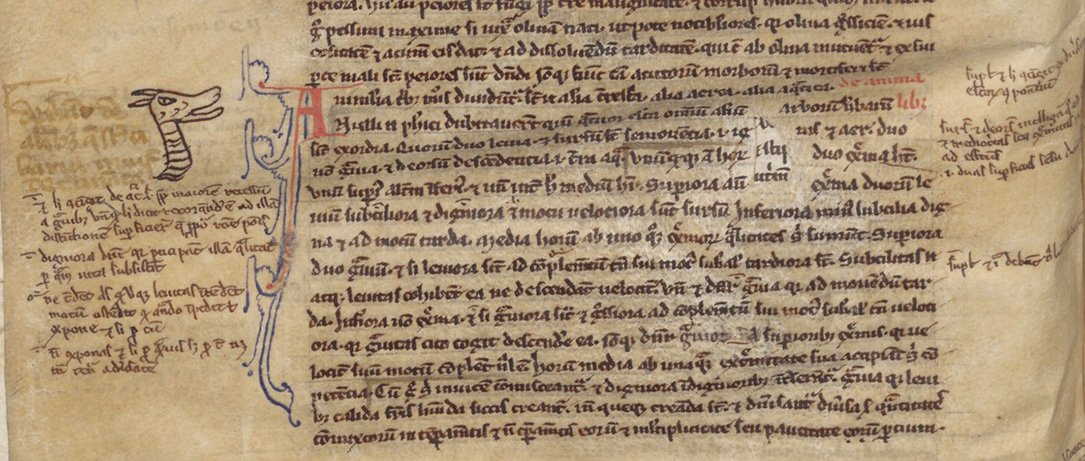
For whom?
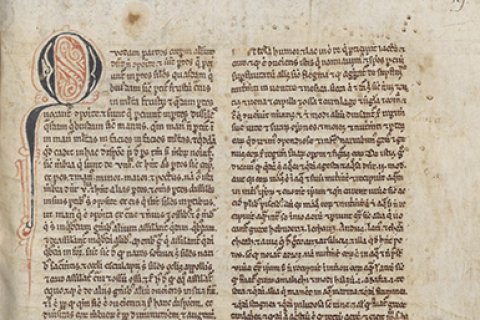
This text is not exactly concerned with practical information on women’s medicine, but is rather a collection of natural philosophy and anti-feminine reflections on the nature of woman and how it is that she is so inferior to man (Green 2008, 205). Over a hundred manuscripts survive, besides multiple prints and countless translations (Lie & Kuiper 2011, 43). The Secretis-tradition apparently provided a need; but which? Originally written in a monastic environment, it was (falsely) attributed to renowned theologian and philosopher Albertus Magnus (died 1280) (Lemay 1992). The monks needed this ‘knowledge’ about women in order to help them take women’s confessions and determine punishment for the sins they had committed. Furthermore, the text serves as a warning to the clergyman not to engage with these strange second-class beings. It decidedly does not appear to have been written for women. On the contrary: some of the extant prologues explicitly caution the reader not to allow any woman to lay eyes upon it! (Lie 1999, 7-8). Regardless, multiple translations and editions of this text are known to have been aimed at women specifically (Lie & Kuiper 2011, 48-50).
Glosses: how much information can fit on a single page?
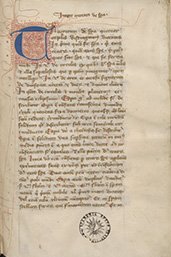
The final text in this convolute manuscript offers a peculiar appearance. Each page is lined to accommodate one column, 8.3 cm wide and 14 to 15 cm high, containing as many as 44 to 46 lines. That makes it quite closely written already. And yet, one user has contrived to scribble extra words in between those lines. These extra words often appear to be clarifications or translations of Latin technical terms. Sometimes they are merely small marks, akin to asterisks, that refer to a notation in the margin. The margins all around allow room for plenty of notes and remarks, and this room has been liberally taken. Entire essays surround the main text, as though they were glossa ordinaria around the Scriptures. Apparently, Isaac Israeli ben Solomon’s beneficial diets elicited a good deal of discussion. All of these glosses and annotations have been written in exceptionally tiny script, yet they are nonetheless quite legible. There is so much text on many of these pages; if you were to type it all out (and solve all of the abbreviations), you would probably need several A-4 printing sheets per page! No edition of these additions has been made available to this date.
Scattered notes
Just in case it was not yet clear how intensively this manuscript has been used, the last three folia may provide further evidence. Charts and lists in several different hands litter the pages, somewhat resembling mnemonic aids – in the back of the codex, where they would have been easily accessible. The contents of these notes have yet to be explored. It looks like body parts and diseases are named, as are the temperaments associated with humorism, along with who knows what else. A pretty puzzle for those interested in the pursuits of the people who used this manuscript.
Author
Irene Meekes - van Toer, August 2017

